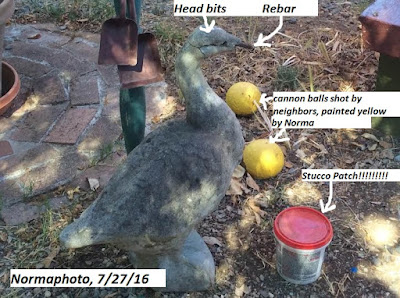When I was little my world was full of walnuts and chickens. One of my jobs as a five-year-old was dragging a gunny sack under a tree to collect fallen walnuts. Once I got a couple dozen in the sack I'd swing it round in front of me and kick it with every step, which made a satisfying crunch that attracted chickens. Chickens would follow me around and say, "buck, buck, buck."
I was sure the chickens thought my name was Buck and were trying to get my attention. But, by and by, because they seemed to call each other Buck and mutter "buck" about everything, I considered other possibilities. Years later I tried stiffening my lips in approximation of a beak and found it impossible to pronounce the letter F. Came out B. Mystery solved. I learned something of the general discontent of chickens.
But this is not intended to become an autobiography. Typical of boys my age I have an aversion to the finality of the form. After one experiences a few blows in life, one feels a bit impermanent and shies away from writing it up. This is instead a personal essay which, although containing some historical exposition, is another sort of thing. I will restrict my comments to barnyard animals.
Childhood observation was recalled to me as I sat in the back porch with one of my grandsons. We heard roosters crowing to the west, to the south, then more distantly to the east. Once those in all directions knew of each other, they crowed back and forth incessantly.
Grandson asked what they were saying. I said, "Traditionally, 'cock-a-doodle-do.'"
He didn't think so. I listened. He was right, cock-a-doodle-do has five syllables and these roosters were crowing only four. The rise in pitch toward the end was right, but was revealed now as interrogative. A question.
"A riddle?" He asked .
A riddle with no answer, or an answer so obvious as to need no articulation besides silence, followed by repetition --an enigma! We listened carefully, trying to fit lyrics to their four notes. Finally we heard it together: Where's-the-bathRRROOOM? Where's the bathRRROOOM?
We got the answer simultaneously too: for a chicken, anywhere.
I post this scholarly personal essay in hopes that others will explore the language of chickens and contribute to a lexicon --an addition to the Rosetta Stone that includes poultry. Remember to consult children in this endeavor, especially if you aren't a child yourself. Children remind us we are on this planet to learn, to imagine and to have a little fun every day.








